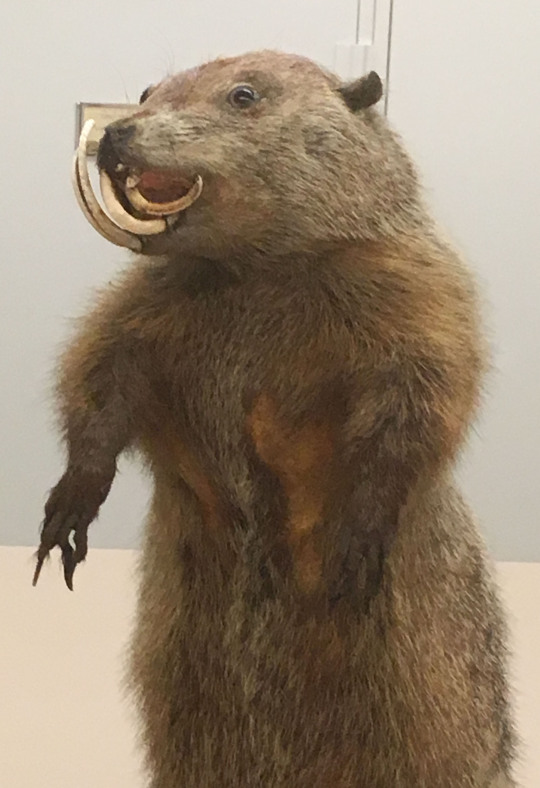By: Suzanne McLaren

Woodchuck, groundhog, whistle pig- these picturesque and sometimes misleading names describe one of the state’s most common and familiar mammals. The exposure of “Punxsutawney Phil” has helped to acquaint many people with some of the groundhog’s habits and has made the animal appear to be a comical character.
The importance of incisors in the woodchuck’s obtaining of food is obvious when the remaining teeth are examined. Between the incisors and the cheek teeth is a large gap which would be filled by canine teeth in omnivorous and carnivorous mammals. Behind this gap, called the diastema, are five molar-type teeth on each side of the upper jay and four on each side of the lower jaw. These cheek teeth grind and pulverize the material obtained for them by the incisors.
The image above details the importance of perfect dental alignment in a woodchuck. Misaligned teeth lead to unchecked growth and death by starvation.
Suzanne McLaren is the Curatorial Assistant of the Section of Mammals in the Carnegie Museum of Natural History.
